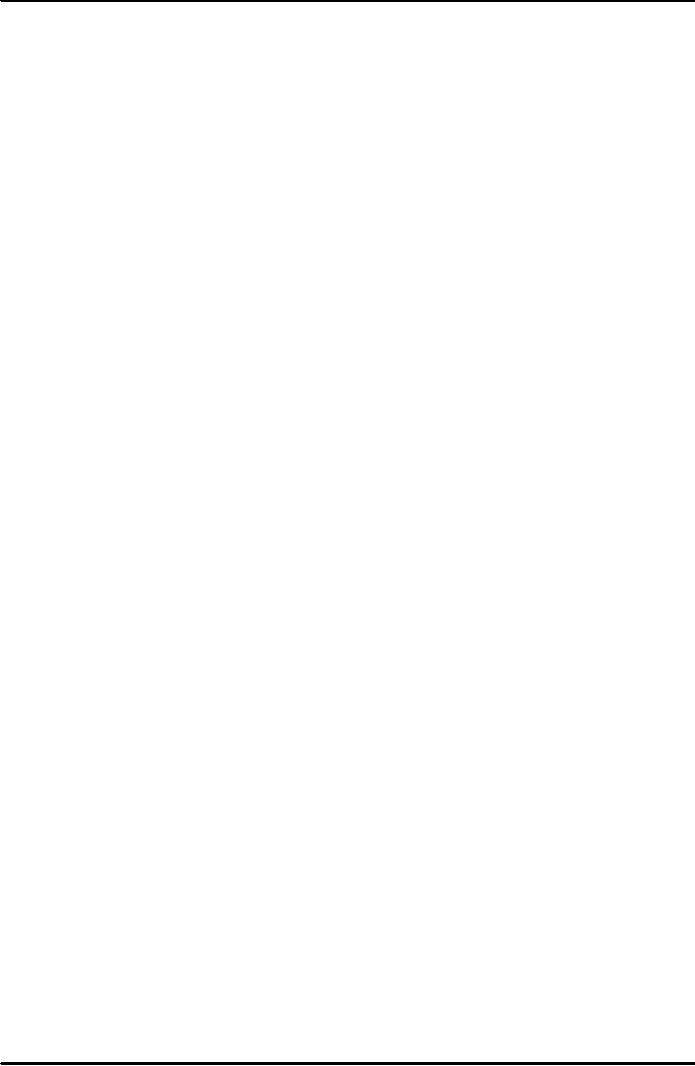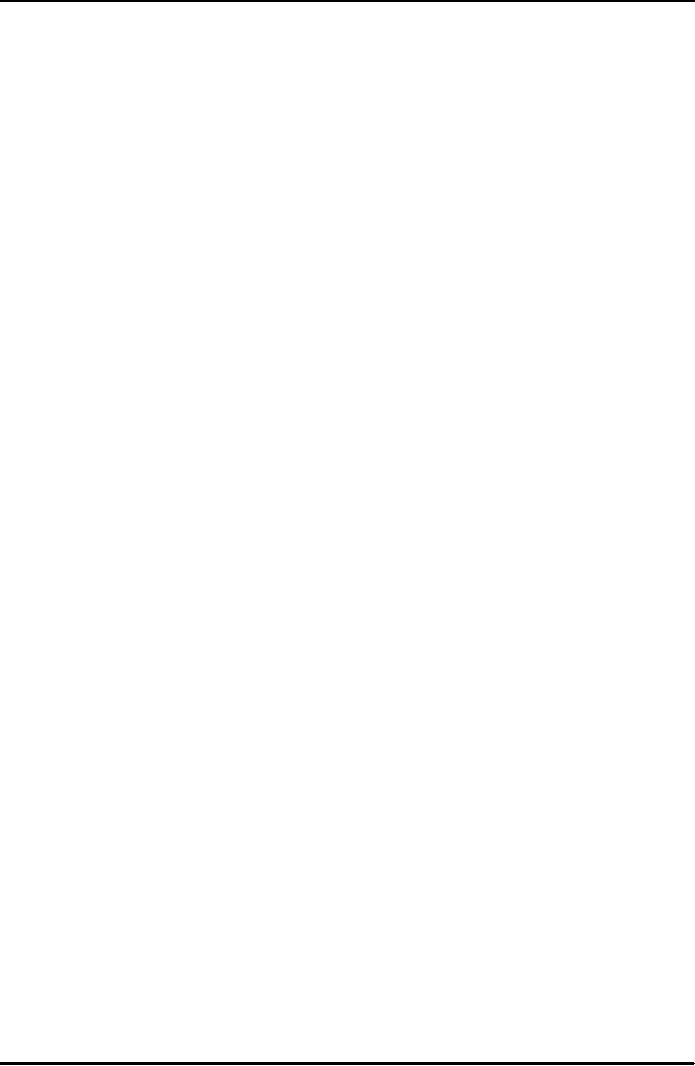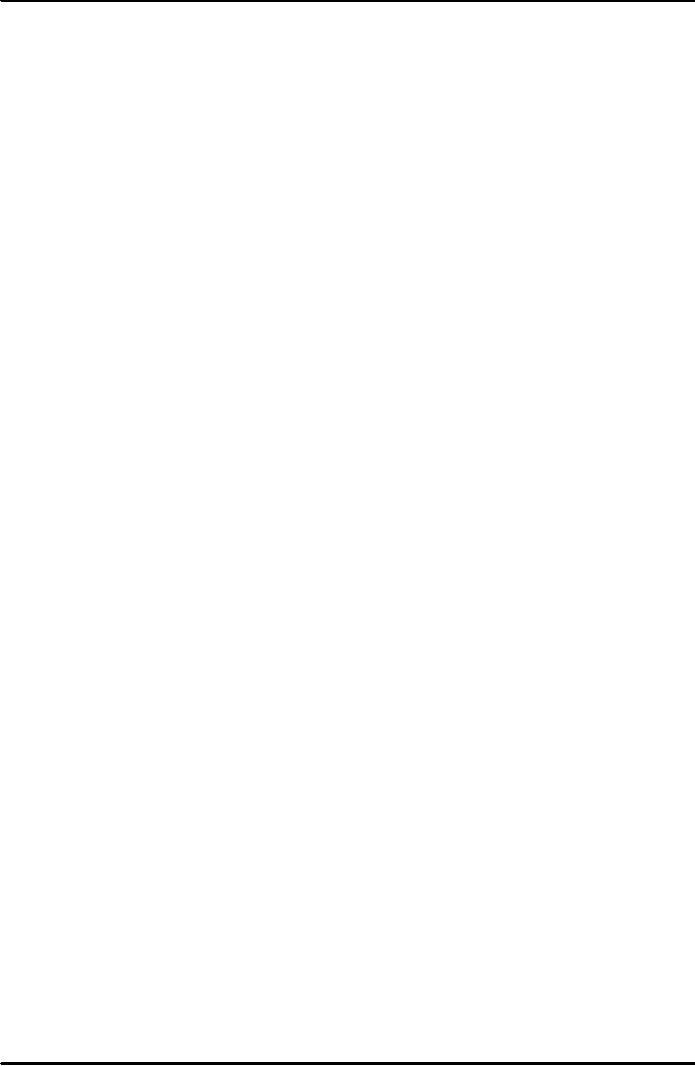 |

Change
Management MGMT625
VU
LESSON
# 22
SOME
COMPLEXITIES OF CHANGE
The above
six factors are closer to
real life organizational dynamics;
demonstrate the complexities
of
routines of real life. While
he interaction amongst these
five phenomenon makes
change
complex
which are listed
below:
1.
Unanticipated Consequences of Ordinary
Action
2.
Solution Driven
Problems
3.
The Tendency for Innovation
- And Organisations to Be Transformed
During the Process of
Innovation
4.
The Endogenous Nature of Created
Environment
5.
The Interaction amongst
System Requirements of Individuals,
Organizations and Environments
1.
Unanticipated Consequences of Ordinary
Action
First,
the rate of adaptation may be inconsistent
with the rate change of environment.
Unless an
environment
is perfectly stable, organization can
not learn appropriately.
This means
organization
always
lag behind environment. Where an
environment changes quickly
relative to the rate of
organization
adaptation, the process of adaptation
can easily lose its
sense to be sensible
and
relevant.
At times organization anticipates ahead of
time. Example can be given
from marketing. A
product
was launched by one sugar firm in
Pakistan as liquid sugar. The idea
seems too fine and
advanced
a concept but failed
miserably given the cultural
context of Pakistani society.
Similarly,
some
products that are technologically
too advanced also liable to
fail because they are
ahead of
time.
Similar is the case with
changing organisation strategy and
organisation when situation/
time
or
environment /market is not mature
enough to absorb
change.
Therefore,
it is possible for an anticipatory
process (problem-solving) to result in
changes that out
runs
the environment and thereby become
unintelligent. Second, the causal
structure (cause and
effect
as seems obvious to us to external)
may be different from that
is implicit in the process.
While
changing through following and
imitating we tend to focus external effects and
ignore causal
links
which are benign or hidden.
Since we have an incomplete picture or false
model of causality,
therefore
eventually change can result
in unanticipated outcomes. Third
concurrent or parallel
processes
(changes at times stay
parallel) appear to carry
sense may combine to produce
joint out
come
that are not intended by
any one, and counter the interests
motivating the individual
action.
For
example the retention of a manual system
besides going for the automated
(New) one. Though
avoided
but these unanticipated
outcomes are quite
common.
Examples
Competency Multiplier
Oorganizations
have procedure to involve relevant people
in processes such as
decision-making,
planning,
budgeting or the like. Individual
vary in their knowledge,
skills and interests about
a
problem.
Initial participation rate vary and
participating individual turn
out to be slightly more
competent
than others. This induces them to
become even more competent. Before long,
the de
facto
composition of the group can
change dramatically (than
initially conceived). More
generally
organizations
learn from experience, repeating actions
that are successful. As a
result they gain
greater
experience in areas of success than in
areas of failures. This
seems sensible and logical.
The
sensibleness
of such specialization depends on the
learning rate and rate of change in
environment.
The
process can easily lead to
misplaced specialization if there are
infrequent, major shifts in
the
environment
(increased specialization lead to
increased dependence and hence
org. is vulnerable to
change)
Another
example of unexpected outcome from org.
routines is related with
satisficing behavior of
individual
and organization. According to March and
Simon, organization seek
alternatives that
will
satisfy target goal rather
than to look for the
alternative with the highest possible
value.
Satisficing
organization can be viewed as the
organization which tries to
maximize the probability
of
achieving targets. But it is
not necessary to assume that
satisficing organization will
follow
51

Change
Management MGMT625
VU
decision
rules, that are, risk
avoiding in good times, and, risk-seeking
in bad times. For e.g.
organization
that are facing bad times
will follow riskier means
and riskier strategies,
thus
simultaneously
increasing the chances of their survival
through the present crisis and reducing
their
life
expectancy simultaneously.
As
a result organization efforts to
survive in fact speed up the
process of failure.
Risk-seeking
behavior
transformation that needs
some qualification, experience and mindset to
manage risk
which
was never cultivated earlier
in organizations. Second, most of the
time organization
exhibit
risk-avoiding
behaviour by its very nature.
Because, if organization goals vary
with organization
performance
and performance of comparable organizations,
then most organization will
be termed
reasonably
good most of the time. The
above example depicts how routine
can lead to
un-intended
surprise
outcome
Another
example identified is of performance
criteria. An organization measures the
performance
of
its participants. Common criteria
for business firms are to
reward their managers on the
basis of
calculation
of profits warned by different
parts of the organization. The
performance-reward
linkage
is to be made precise and visible
for organizational control
purposes as well. However
this
practice
may lead to ignore long term
consequences for organization
since it is more efficient in
short
term because efforts are
devoted to accounts rather than to
performance. This may lead
the
participants
to manipulation and maneuvering in
organization.
Superstitious
Learning
Organizations
learn from their experience,
repeating actions associated with
good outcomes and
avoiding
actions associated with bad outcomes
(Learning by association phenomenon or
conditioning).
This is successful in stable
world. But the world is not
so simple and stable all
the
time,
experiential learning can
result in superstitious learning. Example
reported one author here
is
of
pilots. The trainers reward
pilots who make good
landings and punishing pilots
who makes bad
ones.
They observe that pilots
who are punished generally
improve on the subsequent
landings,
while
pilots who are praised
generally do worse. Thus they learn
that negative reinforcement
works
better
than the positive one. The
learning is natural but the experience is
a confounded one. Let me
quote
my own experience here about
students. Students who
perform better in the
preliminary
examination
and get rewarded well will tend to
perform mediocre in the subsequent
examination as
against
the one who performs average in the
preliminary examinations and improves
more in the
subsequent
emanations. Hence these examples
illustrate the variation in behavior
generated by
adaptive
processes in a typical organization
conditions which can lead to
surprising outcomes.
2.
Solution Driven Problems
Good
examples for solution driven
problems exist in our society. You
can observe this in real
life.
For
instance go to doctor and you
will find long, comprehensive
multi-dimensional prescription at
hand.
The solution is already with
him without even giving
listening appropriately to his
patient. If
you
go to computer technologist for problem
solving with software or
system etc., the
solution
presented
will be to reconfigure the whole
system/ window etc In office
meetings bosses or heads
of
department or organizations frequently
come up with statements
starting with you all
.All such
scenarios
refer to the tendency to have a generalized
solution in prior.
According
to Cyert and March, "There is ample
evidence of when organization performance
fails to
meet
objective then it search for
new solution, that is new
ways of doing things as changes
often
seem
to be driven less by problems than by
solutions." Why this is so?
Because organizations face
a
large
number of problems of about equal
importance, but only a few
solutions. Thus the chance of a
solution
to a particular or unique problem is
small. Consequently organization
scans for solutions
rather
than problem, and matches
any solution found with
some relevant
problem.
Second
reason is the linkage between individual
solutions and individual problem is
often difficult
52

Change
Management MGMT625
VU
to
make unambiguously especially
when causality and technology
are ambiguous. Therefore
what
we
observe will be predicted by
knowledge of solutions than by
knowledge of problems.
Imperatively
professional change their
procedures and introduce new
technologies because
they
have
knowledge of it. An organization
that is modern adopts new
things because that is what
being
modern
means. When a major stimulus
for change comes from a
sense of competence, problems
are
created in order to solve them,
and solutions and opportunities
stimulate awareness of
previously
un-salient or unnoticed problems or
preferences.
3.
The Tendency for Innovation -
And Organisations to Be Transformed
During the
Process
of Innovation
It
is observed that both innovations and
organizations tend to be transformed
during the process of
innovation.
Different and multiple meanings
exist for the intended
change in the organization and
hence
the standardization of meanings of change
is a problem owing to inappropriate
strategy or
poor
analysis It is also a common problem
that change policy or
program gets started with
some
intent
and eventually end up with something else
because of the fundamental ways in
which
changes
are transformed by the process of change.
Organization also gets transformed in
the
process.
Organizations develop and
redefine goals while adapting to
environmental pressure;
minor
changes
can lead to larger ones,
and initial intent can be
entirely lost
4.
The Endogenous Nature of Created
Environment
General
assumption is organization takes
action due to environmental pressure, and
that
environment
is not influenced by organizational
actions. But organizations create
environment as
well,
and the resulting complications are
significant. For e.g. action of one
competitor becomes an
environment
of another, therefore each
competitor determines its own
environment. For example
an
executive
of a leading shoe firm
revealed why their firm
does not charge higher
prices despite
producing
a quality product of international
standards? Because this will
become an industry
standard
and other competitors will follow
without delivering the same
quality. This type of
behaviour
is inline with corporate social
responsibility.
Hence
adaptation is not learning
about fixed environment but
is to deal with continuously
changing.
Therefore
organizations are quite
capable of influencing and creating
their own environment by
the
way
they interpret and act in a
confusing world. So what
happens practically is that
small signals
out
of routine or adaptive processes get
echoed back to organization (through
environment) in an
amplified
manner, and hence may result in
changing organization simultaneously and
endogenously
5.
The Interaction amongst System
Requirements of Individuals, Organizations
and
Environments
Though
this is oversimplification, nonetheless,
it is possible to see an organization as
an
intermeshing
of three systems: individuals, collection
of individuals (which is organization)
and
environment
(which is collection of organization).
Conflicts might exist in the
demands of these
three.
While classical literature
focuses on making individual and
organization demands
compatible,
but in the analysis of organization
change it seems that
individual in organization and
organization
itself has different requirements in the
collection of organization (which
is
environment).
The question is how to place
all three in equilibrium? Finally
organization is
complex
combination of activities, purposes and
meanings.
Even
impressive integration of formal
organization, should not
however, obscure the many ways
in
which
organization is loosely coupled.
Behavior is loosely coupled
with intentions, and
intentions
are
loosely couple with actions; actions in
one part of the organization are
loosely coupled with
actions
in another part; actions of today are
loosely coupled with actions of
tomorrow. Such loose
coupling
does not appear to be
avoidable. These do not
relate to theory but pertains to
adaptive
process
of change.
53
Table of Contents:
- COURSE ORIENTATION:Course objectives, Reading material, Scope of the subject
- BENEFITS AND SIGNIFICANCE OF CHANGE MANAGEMENT:Traditional management domain
- KURT LEWIN MODEL: ASSUMPTIONS AND IMPLICATIONS:Change Movement, Refreeze
- IMPLICATIONS OF KURT LEWIN MODEL:Sequence of event also matters, A Critical Look
- SOME BASIC CONCEPTS AND DEFINITIONS:Strategic change, Logical incrementalism
- TRANSACTIONAL VS. TRANSFORMATIONAL LEADERSHIP:Micro-changes, Organisation Development
- THEORIES OF CHANGE IN ORGANISATIONS
- LIFE CYCLE THEORY:Unit of Change, Mode of change, Organisation death
- TELEOLOGICAL THEORIES OF CHANGE:Unit of change, Mode of Change, Limitations
- DIALECTICAL THEORIES OF CHANGE:Unit of Change, Strategic planning
- A DIALECTICAL APPROACH TO ORGANISATIONAL STRATEGY AND PLANNING:
- LIMITATION OF DIALECTICS; DA AND DI:Overview of application of dialectics
- THEORIES OF CHANGE IN ORGANISATIONS
- APPLICATION OF EVOLUTIONARY THEORY:Managerial focus
- FURTHER APPLICATION OF EVOLUTIONARY THEORIES:Criticism
- GREINER’S MODEL OF ORGANISATIONAL– EVOLUTION AND REVOLUTION
- GROWTH RATE OF THE INDUSTRY:CREATIVITY, DIRECTION, DELEGATION
- COORDINATION:COLLABORATION, The Crisis
- ORGANISATION ECOLOGY:Structural Inertia, Internal Structural Arrangements, External Factors
- CLASSIFICATION OF ORGANIZATIONAL SPECIES:Extent of Environmental Selection, Determinants of Vital Rates,
- FOOTNOTES TO ORGANISATIONAL CHANGE:Stable Processes of Change, Rule Following, Conflict
- SOME COMPLEXITIES OF CHANGE:Superstitious Learning, Solution Driven Problems
- ORGANIZATIONAL ADAPTATION:The Entrepreneurial problem, The Administrative Problem
- PROSPECTORS:Analyzer, Reactors, Adaptation and Strategic Management
- SKELETAL MODEL OF ADAPTATION:Determinants of Adaptive ability, The Process of Adaptation
- STRATEGIC CHANGE:Nature of Change, The Importance of Context, Force field Analysis
- Management Styles and Roles:Change Agent Roles, Levers for managing strategic Change
- SYMBOLIC PROCESSES:Political Processes, COMMUNICATING CHANGE, Change Tactics
- STRATEGIC CHANGE:Pettigrew & Whipp’s Typology, Context on X-axis (Why of change)
- STRATEGIC CHANGE:Attributes of SOC Model, Implications for Management
- STRATEGIC CHANGE:Flow of Information, Recruitment, SOC Process
- Determinants of a Successful Change Management:Environmental, Management Orientation, Management Orientation
- Higgins 08 S Model – An Adaptation from Waterman’s Seven S model:Strategy, Systems and Processes, Resources
- IMPLEMENTATION AND STRATEGIC CHANGE: CONSTRAINING FORCES IN THE IMPLEMENTATION OF STRATEGIC CHANGE (CASE STUDY OF XYZ COMPANY)
- IMPLEMENTATION AND STRATEGIC CHANGE: CONSTRAINING FORCES IN THE IMPLEMENTATION OF STRATEGIC CHANGE (CASE STUDY OF XYZ COMPANY)
- WHY IMPLEMENTING STRATEGIC CHANGE IS SO DIFFICULT?:Change Typology, Technical Change
- IMPLEMENTATION APPROACHES:Attributes of incremental change,
- IMPLEMENTATION: RADICAL OR TRANSFORMATIVE CHANGE
- IMPLEMENTATION: RADICAL OR TRANSFORMATIVE CHANGE:Definition of Leadership, Follower Work Facilitation
- IMPLEMENTATION: RADICAL OR TRANSFORMATIVE CHANGE:Recognize the challenge
- IMPLEMENTATION: RADICAL OR TRANSFORMATIVE CHANGE
- IMPLEMENTATION: PUNCTUATED EQUILIBRIUM MODEL:Features of Radical Change, Theory of P-E model
- CHANGE IMPLEMENTATION: OD MODELS:The Transactional Factors
- CULTURE, VALUES AND ORGANIZATIONAL CHANGE:Significance and Role of Values, Values Compete
- ORGANIZATIONAL VALUES, CULTURE AND ORGANIZATIONAL CHANGE:Issues in Change Management